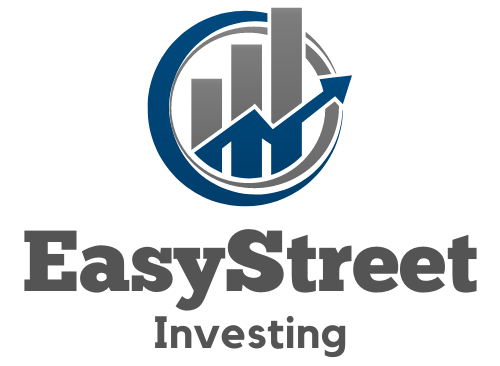In the quest for robust investment portfolios, savvy investors often turn to high-yield ETFs and mutual funds. These financial instruments offer tempting dividends, potentially boosting income while diversifying your holdings. But there’s a catch: higher yields can mean higher risks. In this article, we’ll navigate the intricate dance of risk versus reward in high-yield investments. Get ready to explore strategies that balance your appetite for gains with prudent risk management.
Diving into the world of high-yield options, you’ll learn how to spot opportunities and dodge pitfalls. We’re talking about more than just picking stocks; it’s about creating a safety net that can withstand market turbulence. You’ll discover how blending ETFs and mutual funds can serve up a diversified spread, much like a well-crafted banquet where each dish complements the others. By the end of our journey, you’ll be equipped with insights to make informed choices, ensuring your portfolio isn’t putting all its eggs in one basket. Let’s unlock the secrets to harnessing high returns without getting burned.
Important Highlights
1. High-yield ETFs and mutual funds offer investors the chance to diversify their portfolios by incorporating assets with potentially higher returns compared to traditional fixed-income investments. These financial instruments typically invest in a collection of high-yielding securities, such as corporate bonds with lower credit ratings or dividend-paying stocks, which can provide an income stream alongside capital appreciation opportunities.
2. Risk management is paramount when investing in high-yield ETFs and mutual funds, as these products often hold securities that are more susceptible to economic downturns and credit risk. Investors should assess their risk tolerance and investment horizon before allocating funds, ensuring that they are comfortable with the potential for higher volatility in exchange for the opportunity of increased returns.
3. Diversification within a portfolio is one of the key advantages of high-yield ETFs and mutual funds; these funds spread out exposure across many issuers and industries, reducing the impact of any single security’s poor performance. This strategy can be particularly effective in mitigating risks associated with high-yield investments, though it doesn’t eliminate them entirely.
4. Tax considerations play a significant role in the decision-making process, as high-yield bond interest is typically taxed at ordinary income rates, which could be higher than long-term capital gains rates for some investors. Evaluating the after-tax return on these investments is crucial to understanding their true benefit within an investor’s portfolio.
5. The performance of high-yield ETFs and mutual funds often correlates with broader market trends, making market research essential. Investors should stay informed about economic forecasts, interest rate movements, and industry health to make timely decisions regarding their high-yield investments’ allocations amidst changing market conditions.
Understanding High-Yield ETFs and Mutual Funds
Investors seeking to diversify their portfolios often turn to high-yield exchange-traded funds (ETFs) and mutual funds for potential income generation. These financial instruments predominantly invest in assets that pay higher dividends or interest rates, such as corporate bonds, preferred stocks, and other debt securities. By allocating a portion of an investment portfolio to high-yield options, investors can potentially increase their overall returns while spreading risk across various sectors and instruments.
The Role of Diversification in Investment Strategy
Diversification is a key strategy employed by savvy investors to mitigate risk. It involves spreading investments across various asset classes and industries to reduce exposure to any single asset’s performance. Including high-yield ETFs and mutual funds in a diversified portfolio can introduce a stream of income, which may help cushion against market volatility. Moreover, the intrinsic nature of ETFs and mutual funds—pooling together many different assets—furthers diversification within the high-yield segment itself.
Evaluating High-Yield Investment Options
Selecting the right mix of high-yield investments requires careful evaluation of several factors. Look at the fund’s historical performance, but remember that past results are not indicative of future returns. Consider the credit quality of the underlying securities; higher yields are often associated with higher risk. Focus also on expense ratios and fees, as these can erode returns over time. Investors should thoroughly assess their own risk tolerance alongside these variables before committing capital.
Risks Associated with High-Yield Investments
While high-yield ETFs and mutual funds offer attractive income opportunities, they come with increased risks compared to lower-yielding investments. Credit risk is significant since these funds may hold securities from issuers with lower credit ratings. Interest rate risk is another concern; as rates rise, the value of existing bonds typically falls. Market liquidity can also fluctuate, impacting the ability to buy or sell quickly without affecting the price significantly.
Strategically Allocating to High-Yield Investments
To optimize the benefits of high-yield investments within a diversified portfolio, strategic allocation is crucial. An investor might consider limiting the percentage of their total investment capital invested in high-yield ETFs and mutual funds to manage potential volatility. Rebalancing regularly ensures that the chosen allocation remains consistent with one’s investment goals and risk appetite.
Tax Implications of High-Yield Investments
Investors should be aware of tax implications associated with high-yield investments. Dividends and interest from these funds may be taxed at different rates than other forms of income, depending on individual circumstances and current tax laws.
Benchmarking Performance Against Indices
To gauge performance, compare your high-yield ETFs and mutual funds against relevant benchmarks, such as high-yield bond indices. This provides context for assessing whether your investments are performing as expected relative to the broader market.
Incorporating LSI Keywords for Enhanced Understanding
In discussing portfolio management strategies involving income-generating assets like junk bonds, convertible debentures, or dividend-paying equities included within certain funds, it’s important to relate these concepts back to our main topic: diversifying with high-yield options.
Portfolio Rebalancing and Continuous Monitoring
Consistent rebalancing ensures that an investor’s holdings align with their evolving financial objectives. Continuous monitoring allows for timely adjustments in response to market changes or shifts in one’s financial goals.
Making Informed Decisions on High-Yield Investments
Prioritize due diligence when selecting specific ETFs or mutual funds by examining detailed prospectuses which disclose investment strategies, holdings information, and management philosophies.
Tapping into Expertise for Investment Guidance
Consulting with financial advisors or utilizing resources from reputable finance-oriented platforms can provide additional insights into constructing a well-rounded high-yielding diversified portfolio.
Tips on Diversifying With High-Yield ETFs and Mutual Funds?
- Analyze your current portfolio composition before adding new high-yield positions; ensure they complement your existing holdings.
- Maintain balance by pairing high-risk, high-reward positions with more stable investments.
- Monitor interest rate forecasts as part of your ongoing strategy review; anticipate how shifts might affect your high-yield positions.
- Familiarize yourself with industry jargon such as “yield spreads” or “default rates” – understanding these terms will aid in making informed decisions.
- Leverage professional advice if you’re unsure about how best to incorporate these types of investments into your overall strategy.
- Stay updated on regulatory changes that could impact yield-focused investment vehicles.
- Diversify globally if possible; look beyond domestic markets for yield opportunities that also provide international exposure.
- Use dollar-cost averaging when investing in volatile markets; this technique helps mitigate timing risks.
- Evaluate dividends’ sustainability by reviewing payout ratios and company earnings; this helps comprehend future revenue streams from dividend-paying assets within funds.
- Consider using dividend reinvestment plans (DRIPs) offered by some ETFs and mutual funds for compounding growth through reinvested distributions.
Frequently Asked Questions
What are High-Yield ETFs and Mutual Funds?
High-yield ETFs and mutual funds are investment vehicles that pool money from many investors to invest in assets with higher-than-average returns, often from bonds or stocks with high dividend rates. They aim to provide investors with a steady income stream.
Why is diversifying important when investing in these funds?
Diversifying helps spread your risk across various investments. By investing in a mix of high-yield options, you’re less likely to suffer a significant loss if one investment underperforms.
Can I lose money with High-Yield Investments?
Absolutely. While high-yield investments offer the potential for greater returns, they also come with higher risk. It’s possible to experience losses, especially if market conditions are unfavorable.
How do I choose the right High-Yield ETF or Mutual Fund?
Consider factors like the fund’s performance history, fees, the credibility of the managing team, and how well it fits within your overall investment strategy and risk tolerance.
What role do interest rates play in the performance of High-Yield Investments?
Interest rates can significantly impact high-yield investments. Rising rates often lead to lower bond prices and can affect the financial health of entities issuing high dividends.
How often do High-Yield ETFs and Mutual Funds pay out?
Most high-yield funds distribute income monthly or quarterly. However, payment frequency can vary by fund, so check the prospectus for specifics.
Are these funds suitable for short-term investing?
Generally, they’re better suited for long-term investing due to their volatility and potential for higher returns over time. Short-term investors might find the risks outweigh the benefits.
What percentage of my portfolio should be in High-Yield Investments?
This depends on your individual risk tolerance and investment goals. Consulting with a financial advisor is wise to tailor your portfolio to your needs.
Do taxes impact High-Yield Investment returns?
Yes, income from these investments is typically subject to tax. The impact on your returns will depend on your tax bracket and account type (taxable or tax-advantaged).
How does inflation affect High-Yield Investments?
Inflation can erode purchasing power, which may negatively affect the real return of high-yield investments. Some assets may be more resistant to inflation than others.
Closing Thoughts on Building Wealth with High-Yielding Options
Diversifying with high-yield ETFs and mutual funds can be a savvy strategy for investors seeking an income boost while mitigating risks through diversification. Balancing these potent tools within a well-thought-out portfolio is key to navigating the complex landscape of yield-generating investments. Always remember that understanding your own risk tolerance and financial goals is crucial before taking the plunge into high-yielding waters.
Maintaining an informed perspective on market trends, interest rate movements, and economic indicators can equip you with the insight necessary for making educated decisions about including high-yield ETFs and mutual funds in your asset allocation. With careful planning and ongoing assessment, these investment avenues have the potential to fortify your portfolio against uncertainty while striving toward financial growth.

